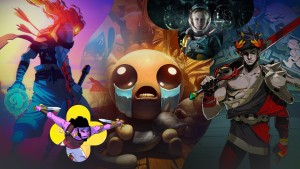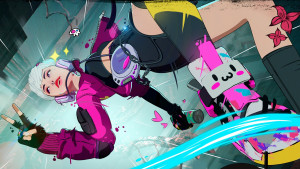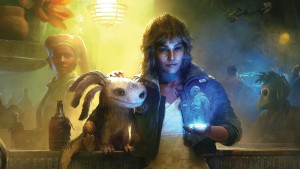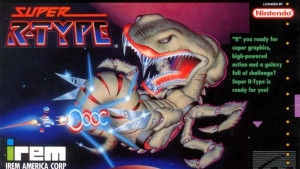Please support Game Informer. Print magazine subscriptions are less than $2 per issue
Digital Intimacy: How Recent Video Games Tackle Sexuality

This feature was first published in Game Informer Magazine issue 286, and includes major spoilers for The Witcher 3: Wild Hunt, Telltale’s Batman, and Dragon Age: Inquisition.
In 2005, controversy erupted when the PC version of Grand Theft Auto: San Andreas released. The GTA series is no stranger to negative media attention, often looked down upon for its crude and juvenile themes. This time, the public was taken aback by sexual minigames hidden in the game’s code. These minigames depicted protagonist Carl “CJ” Johnson performing sexual acts with his chosen in-game girlfriend, with each move and action in the bedroom under the player’s control. Though inaccessible to the average player, some were skilled enough with game code to reveal its contents, creating a mod called Hot Coffee that enabled these hidden scenes.
The Hot Coffee scandal was subject to mainstream media headlines, several civil lawsuits, and a re-assessment of the game’s ESRB rating. Today, 12 years later, would these minigames still receive that same level of controversy? It’s difficult to say, but sex remains one of video games’ under explored bastions in terms of cultural taboo. Sex has had a tumultuous history in interactive media, and we rarely see authentic depictions. Often, games shy away from meaningful intimacy, preferring to have it swept under the carpet or passed off as humorous, but some game developers are looking to change that. From BioWare’s inclusive relationship arcs to Ladykiller in a Bind’s unabashed view of sexuality, developers are tackling sex in new and progressive ways.

Sex As Interaction
Most sex scenes in video games are sectioned off into short cutscenes, or are implied to happen off-screen. Some, however, bring more interactivity into the mix, but the result isn’t always satisfying. With 2010’s Heavy Rain, clumsy animation and exaggerated button prompts during a make-out scene made it too awkward to be taken seriously. In Telltale’s Batman series, a scene between Bruce and Selina gives the player some light interactivity with flirtatious choice mechanics, such as unzipping the other’s jacket or kissing; but before things get too steamy, it fades to black.
Portraying sex in a video game can be difficult, especially when bringing interactivity to these scenes means they could veer toward eroticism and pornography. Another issue is that their inclusion can feel stiff or forced rather than meaningful. However, independent game designer Christine Love, known for visual novels such as Analogue: A Hate Story and Don’t Take It Personally, Babe, It Just Ain’t Your Story, tackles interactive sexuality in a blatant but refreshing way with her newest game Ladykiller in a Bind.
Ladykiller in a Bind is an erotic visual novel billed as a romantic sex comedy. Playing as a lesbian, you cross-dress as your twin brother during a school-trip cruise, where you pursue different classmates and assume various power dynamics during sexual encounters. While titillating eroticism is one of the game’s major themes, it handles sex in a positive light with inclusive queer intimacy and mature storytelling, dabbling in important topics such as consent. Above all, Ladykiller in a Bind isn’t afraid of bringing realism to sex, with all the awkward, silly, embarrassing moments that it can bring out. Love believes most developers don’t think about how sex informs their work, and that it can be challenging to portray it with tact, often coming across humorous unintentionally.
“There’s a big challenge to how do you portray sex, how do you make it feel like ‘this is not a joke’ which is, again, a big problem a lot of designers have – there’s no confidence,” Love says. “So, there’s this inclination to either pass it off as funny or as something that’s just swept through quickly.”
Love subverts popular conventions in Ladykiller in a Bind, such as moving away from the concept of rewarding the player with sex should they choose the right dialogue options. Most choices in Ladykiller in a Bind stay within the spectrum of progressing a relationship in a natural way, each with their own attributed mood. For example, you can be bratty, embarrassed, or noble in the way you speak to others, or you can say nothing at all by letting these options slowly fade if left unclicked.
“I really want to stay away from [players having to] pick the right option to impress someone,” Love says. “There’s a lot of that sort of design, where sex is a reward but very little where sex is an interaction, so it turned into an interesting challenge of how do you structure choices in the middle of a sex scene without it feeling weird, gratuitous, or not meaningful.”
In contrast, writer Patrick Weekes of BioWare, whose work has encompassed both the Dragon Age and Mass Effect series, believes that for the stories he creates, focusing too much on the act of sex itself can be detrimental, and that those physical moments can be more effective when left to the player’s imagination.
Weekes, in a tongue-in-cheek tone, describes BioWare games as “dating sims with a small save-the-world minigame,” though what makes these experiences stand out is that romances are entirely optional, never forced upon the player like they would be in linear storytelling. BioWare characters are held dear by many players, and for some, these romances are the core experience. Discovering what worked and what didn't was a learning experience for the team.
Looking at earlier iterations of both franchises, Weekes thinks the team focused too much on portraying physical sex scenes, with not enough emphasis on natural progression. “I think we were very focused on the act of sex,” he says. “In the first cases, sex was very much there as the goal. One thing that I feel we’ve gotten better at as we’ve gone on, in both franchises, is looking at sex as not just the win condition where you have to succeed in maxing out this character’s approval, but more as a natural and healthy part of a relationship between two consenting people.”

Inclusive Representations
BioWare has always shown a dedication to fleshing out romantic moments, and as time went on, the team grew more comfortable with building a more varied cast that has their own sexual identities, preferences, and interests. While Dragon Age II and the original Mass Effect include same-sex relationship options, most players interpreted these characters as ambiguously bisexual. Rather than presenting concrete identities, these characters were available to the player protagonist regardless of their chosen gender.
With Mass Effect 3’s release in 2012, BioWare designed specific characters that were exclusively gay and lesbian, as well as bisexual. With 2014’s Dragon Age: Inquisition, the team molded these concepts further, moving away from the convention of bisexuality as a crutch, and leaning more toward portraying characters with diverse and fleshed out sexual identities.
“In Inquisition, we made the conscious decision to change that,” Weekes says. “Part of that was to have some characters who are very clearly bisexual, who are open to all players, and other characters who are straight romances, and characters who are exclusively same-sex romances and are not available to the opposite sex.”
Weekes explains that giving characters sexual identities allowed the team to explore stories about being gay. “In Inquisition, you could not take the same-sex element of Dorian’s romance and have it be the same romance, because Dorian’s character is about someone who is gay, and dealing with being gay.”
BioWare games feature large casts of characters, but not all of them are pursuable. For example, in Dragon Age: Inquisition, others will react to your race and gender differently. Sera is only interested in other women, but she’s got a fondness for Qunari and in contrast has difficulty opening up to Dalish elves. Although these limitations may be frustrating should you want to pursue a character that isn’t mutually interested, it introduces a realism rarely seen in games.
“Overwhelmingly, [fans] said that it made the characters more realistic and feel more like people who continue to exist even when the game’s turned off,” Weekes explains.
Dragon Age: Inquisition also introduced its first transgender character, Krem, who is a mercenary under Iron Bull’s leadership. His gender identity is revealed through conversations if you spend enough time in his company, and BioWare meticulously designed his character to come across genuine and be an accurate as possible representation for the LGBTQ community. Following an LGBTQ panel at the Penny Arcade Expo, BioWare listened to player feedback, where many fans indicated they wanted to see transgender representation in a game. Weekes, who wrote Krem’s character, was incredibly willing but “hugely afraid,” as it was something he had never tackled before.
“The only rule was that we were going to do it right, professionally, and were going to do it well. Inside the company, we talked a lot with every department, raising the issue early, and clearly,” he says.
Ladykiller in a Bind similarly features same-sex romances, with most intimate interactions being between women, and this is partly because Love identifies as a lesbian herself. “I make games that I would want to play,” she says. The visual novel features queer intimacy in a way that is unabashed in its rawness, whereas Love believes other games often don’t tackle the nuances of a lesbian love story in the same way they would a heteronormative narrative.

Telling Personal Stories
Intimate stories, whether fictitious or based on real life, can be captivating if done right. Game designer Nina Freeman takes it a step further with tackling autobiographical stories surrounding sexuality. Along with a group of developers at Star Maid Games, she designed Cibele, a game about a sexual experience that blossoms from an online relationship. Based on true events, the player takes the role of 19-year-old Nina in scenes that bounce between embodying the character and voyeurism. You perform actions for Nina, such as opening her messages, clicking icons on her desktop computer, or logging into her favorite MMO – which is where much of the dialogue takes place. Cibele tells a linear tale and sex is one its more prominent beats, but it’s not so much about the act itself.
| Fleshing Out Characters In The Witcher 3 |
|
In the original The Witcher, players collect trophy-like playing cards following sexual encounters with female characters. This feature spurred controversy from critics and players alike, criticizing that it was a form of objectification and degradation toward women. With the latest installment, The Witcher 3: Wild Hunt, developer CD Projekt Red put emphasis on meaningful intimacy, moving away from its past missteps. |
“I think because of the cultural taboo against talking about sex in media, a lot of people tend to be narrow-minded about it, like if it’s going to be a sex game it has to about be about the act itself, for example,” Freeman says. “But that's not true – there's so many ways to talk about sex.”
As a writer, Freeman’s biggest challenge was distilling those real-life moments from an entire relationship, and forming them into vignettes that highlight specific events.
“[Cibele] is all about removing the layers of mediation as they come closer to having sex, which is sort of what their whole relationship is revolving around during the game,” Freeman says. “So my goal was like, ‘How do I embody that? How do I help the player embody that specific experience and perform it and understand it?’”
From flirtatious banter to the exchange of sensual selfies, Cibele has a slow pace that builds up to a final moment. Freeman is boldly featured in the game’s images and live-action scenes, but she never felt uncomfortable with this portrayal. With her background in poetry, she had prior experience writing personal stories that often incorporated sex, and Cibele isn’t Freeman’s first game to tackle sexual themes based off a real event.
When Freeman was young, she would hide under her bed when her mom left the house. Picking up two naked barbie dolls, she would mash them together curiously in crude motions, in an attempt to grasp a physical interaction she didn’t fully understand. Years later, after humorously telling the story to her collaborators at a bar before a game jam, it became the subject of a Flash game called How Do You Do It?, which they created in the span of three days. “It was a story that I often told people,” she says. “I thought was kind of a funny, interesting story and it just struck me as something that was so physical, that it could be really well explored through mechanics of banging dolls together in an awkward way. I thought that was pretty evocative.”
Pushing dolls together is the sole mechanic of the game, which has a certain earnest humor to it as a young girl attempts to understand a foreign, adult concept for the first time.

The Importance Of Sexuality
Media tends to lean toward a more unrealistic view of sex, often leaving out its awkward stumbling blocks. However, refreshing views on sexuality are slowly making their way into mainstream gaming. The video game audience has also grown more diverse through the years, with players yearning for meaningful and mature storytelling. As developers explore this, sex is just one natural element to bring into the equation.
“We’ve evolved from your casual pixelated blend of Strip Poker on the Amiga to games like Gone Home or Life is Strange,” says CD Projekt Red writer Magdalena Zych. “And others are constantly emerging in main- stream gaming, something I person- ally find extremely awesome.”
Video games are still in their infancy in comparison to other media, meaning missteps are common and inclusive representations remain slim. Writing love stories and including intimacy in a video game is a tough feat, due to its interactive nature that can make it feel clumsy or unauthentic. However, we’re progressively seeing healthier and more realistic depictions of sexuality as developers continue to find ways to intertwine story and gameplay more fluidly.










